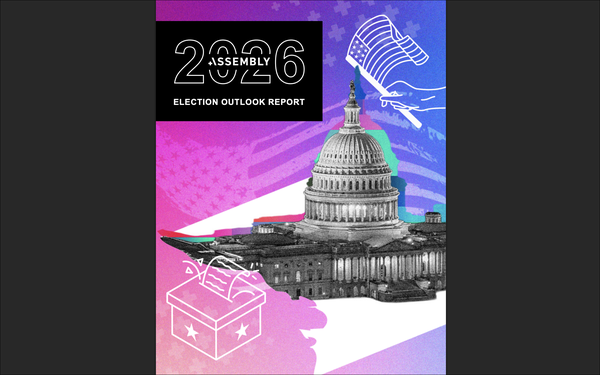
In case you missed Assembly Director of Political Strategy Tyler
Goldberg’s interview at MediaPost’s recent Planning & Buying Summit, you can see it below, but I wanted to draw your attention to a new updated political ad spending forecast he
announced – $10.1 billion for the 2025-26 US. election cycle – as well as a new Assembly political tracking report he teased.
The first edition of the new “Election Outlook Report” is being released today and you can find it here.
advertisement
advertisement
And based on a conversation I had with Goldberg, he convinced me that
it’s the first-of-its-kind to be published by a general market agency – not a political specialist unit – or an outside research supplier.
Goldberg -- who arguably
has become Madison Avenue’s authority on political ad spending as well as message and issues targeting -- says the main reason Assembly is doing it isn’t just for its or parent
Stagwell’s political advertising accounts, but for all of the media services agency’s accounts, which are impacted to at least some degree by the impact of increasingly big, continuous
political advertising cycles that tend to tighten advertising inventory in key markets, and drive ad prices up too.
“We noticed when we started the political practice here
about five years ago that it wasn’t just an underutilized area, but it had never been done before. There had never been a brand-focused agency that had an in-house political practice. We quickly
realized that our commercial clients could also benefit from this very niche expertise.”
That insight led to Assembly’s launch of Advocacy Consulting Technology, or ACT,
which is the umbrella organization covering all of the tools Assembly has built, as well as the new tracking report.
The political team and its new reporting basically buckets the
effects of political advertising on general market advertisers in two ways.
The first part is how it affects inventory and pricing in political advertising markets for general market
advertisers.
That’s something Assembly began sharing with clients when it published a benchmark report in 2022 including a new metric it dubbed Political Intensity Scores.
“The idea was that not only does this political spending affect your advertising strategy from a buying standpoint, but it affected the very mindset of the consumers brands are
trying to reach.
Back in 2022, it was mainly about the impact of political campaigns talking about the economy and inflation, which had an effect on the marketplace psyche of
consumers.
“We found that had a tangible effect on their spending habits, especially on Republican voters who were pulling back on discretionary spending.
In
terms of the next political cycle, Goldberg predicts the skew will be inverted, with Democrats more prone to cutting back on discretionary spending due to political messaging about the economy.
Other likely political messaging themes could impact consumer sentiment about health care, energy, and other categories, he predicts.
While Assembly's new tracking report
differentiates it from other full-service and major independent media agencies, Goldberg says it is not intended to compete with syndicated sources like AdImpact's reports, but it does offer a
slightly different perspective by focusing 100% on demand-side implications for general market advertisers.